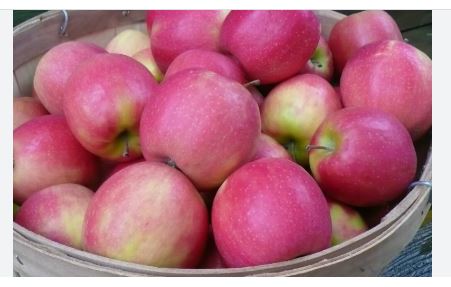
Pink Lady apples are classified as Malus domestica, a species within the Rosaceae family, which includes other pome fruits like pears, cherries, and roses. The genus Malus encompasses all domesticated apple cultivars, and Pink Lady is a specific variety, officially named ‘Cripps Pink’ after its creator. It’s a hybrid resulting from a cross between Lady Williams and Golden Delicious, blending traits suited for flavor, texture, and storage. This positions it among late-season dessert apples, bred for fresh eating rather than cider or cooking, though it’s versatile in culinary use.
Pink Lady apples originated in 1973 at the Western Australia Department of Agriculture, bred by John Cripps, who crossed Lady Williams (a hardy, late-ripening Australian apple) with Golden Delicious (a sweet, juicy classic). The goal was an apple with excellent taste, firmness, and shelf life. Named ‘Cripps Pink’ initially, it debuted commercially in Australia in the late 1980s. The “Pink Lady” trademark emerged in 1989, applied to fruits meeting strict quality standards (e.g., 40% pink blush), managed by Apple and Pear Australia Limited (APAL). It gained global popularity by the 2000s, spreading to the U.S. (Washington, California), Europe, New Zealand, and South Africa, becoming a premium brand known for consistency and appeal.
Pink Lady apples are medium to large, typically 7-8 cm in diameter (about 180-250 grams), with an oblong-to-conical shape. Their skin is thin, smooth, and glossy, featuring a creamy yellow base with a vibrant pink-to-red blush covering 40-100% of the surface, depending on climate and sun exposure. The flesh is creamy white, dense, and exceptionally crisp, encasing a small core with tiny brown seeds. They ripen late in the season (October-November in the Northern Hemisphere, April-May in the Southern) and store well for 6-12 months refrigerated, retaining texture. The taste is a balanced sweet-tart blend, with high sugar (13-15% Brix) and notable acidity, offering a refreshing, tangy bite with hints of honey, vanilla, and spice, evolving as it matures in storage.
Pink Lady apple trees (Malus domestica ‘Cripps Pink’) thrive in USDA zones 5-9, suited to temperate regions with cold winters and warm-to-hot summers, like Western Australia’s Manjimup or Washington State’s Yakima Valley. They require 500-700 chill hours (below 45°F/7°C) for dormancy and fruit set, performing best in zones 6-8 where winters dip to -10°F (-23°C) and summers reach 75-90°F (24-32°C). Late blooming (April-May, flower group 4) reduces frost risk, but protection is needed in zone 5’s colder extremes. They demand full sun (6-8 hours daily) and well-drained, loamy soil (pH 6.0-7.0), excelling below 1,500 meters where heat enhances blush without overstressing the tree.
Culinary Applications of Pink Lady Apple
- Fresh Eating: Their crisp texture and sweet-tart flavor make them ideal for raw snacking or slicing into lunchboxes.
- Salads: Thin slices add a juicy, tangy crunch to green or fruit salads, pairing well with goat cheese or pecans without quick browning.
- Baking: Baked into pies, tarts, or crumbles, they hold shape while blending sweet and tart notes, enhanced by cinnamon or ginger.
- Sauces: Cooked into applesauce, they offer a balanced, zesty flavor, needing minimal sugar due to natural sweetness.
- Cheese Pairing: Their refreshing acidity complements creamy cheeses like brie or sharp ones like aged cheddar on platters.
- Juicing: Pressed into juice or cider, they yield a sweet-tart drink with honeyed undertones, great solo or mixed with other fruits.
- Roasting: Roasted with pork or root vegetables, they soften slightly, adding a bright, tangy contrast to savory dishes.
Cultivation of Pink Lady Apples
- Climate: Pink Lady thrives in temperate climates with cold winters (500-700 chill hours below 45°F/7°C) and warm-to-hot summers (75-90°F/24-32°C). It needs a long growing season for its late harvest.
- USDA Zones: Best suited to USDA zones 5-9, excelling in 6-8 where winters reach -10°F (-23°C) and summers support blush development. Zone 5 requires frost protection during bloom.
- Soil: Requires well-drained, loamy soil with a pH of 6.0-7.0, enriched with organic matter. It tolerates sandy or clay soils if drainage is managed to prevent root rot.
- Sunlight: Demands full sun (6-8 hours daily) to maximize fruit size, sugar content, and pink-red blush. Insufficient light reduces color and yield.
- Planting: Propagated via grafting onto rootstocks like M26 (semi-dwarf) or M9 (dwarf) for controlled size and earlier fruiting (2-4 years). Space trees 10-15 feet apart in rows 15-20 feet apart, planted in late winter or early spring.
- Watering: Needs consistent moisture—1-2 inches weekly—especially during flowering, fruit set, and summer growth (April-September). Drip irrigation is preferred; mature trees handle brief dry spells with deep watering.
- Support: Young trees require staking for 1-2 years to establish against wind due to shallow roots. Trellising or espalier systems in orchards enhance sun exposure and airflow, aiding blush and health.
- Pollination: Late-blooming flowers (April-May, flower group 4) need cross-pollination with varieties like Granny Smith, Gala, or Fuji blooming concurrently. Bees are essential; place pollinators within 50-100 feet or use hives.
- Pests: Susceptible to codling moths, apple maggots, and aphids. Use pheromone traps, organic sprays (e.g., spinosad), or netting; natural predators like lacewings help control infestations.
- Diseases: Prone to fire blight, apple scab, and powdery mildew. Prune for ventilation, apply sulfur or copper pre-bloom, and remove infected parts—rootstock choice (e.g., M111) can boost resistance.
- Harvest: Fruits ripen late season (October-November in the Northern Hemisphere, April-May in the Southern), picked when 40-100% pink blush appears and flesh is firm (16-18 lbs pressure). Harvest in stages; yields 100-150 lbs per mature tree.
- Yield: Begins fruiting 2-4 years after planting, peaking at 5-10 years with 150-250 apples per tree under optimal care. Thin fruit (1 per cluster, 6-8 inches apart) in June to enhance size and prevent biennial bearing; lifespan reaches 30-50 years.